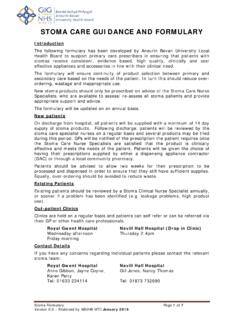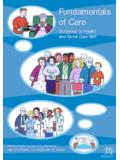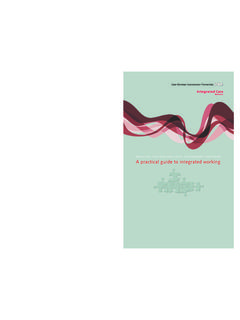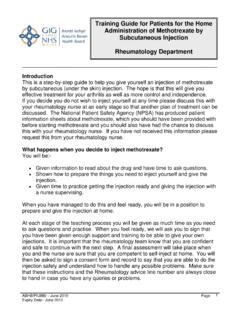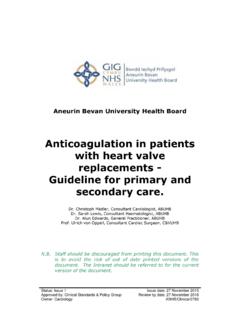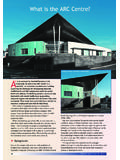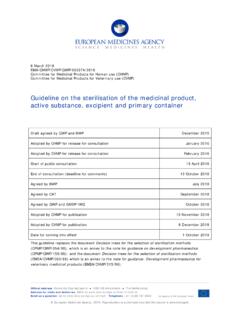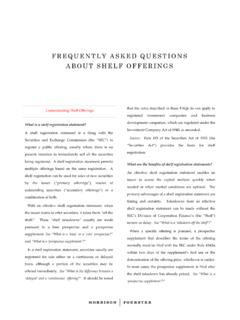Transcription of Using protocols, standards, policies and guidelines to ...
1 Using protocols, standards, policies and guidelines to enhance confidence and career development Terms and definitionsTermDefinitionProtocolAn agreed framework outlining the care that will be provided to patients in a designated area of practice. They do not describe how a procedure is performed, but why, where, when and by whom the care is given StandardA statement, reached through consensus, which clearly identifies the desired outcome. Usually used within audit as a measure of success PolicyA formal written statement detailing the particular action to be taken in a particular situation that is contractually binding GuidelineSystematically derived statements that help practitioners to make decisions about care in specific clinical circumstances.
2 These should be research or evidence based In general, nurses appear to be much more compliant than doctors at working with protocols. Protocols provide a clear logical structure and therefore added confidence for clinical management. In order to create the most pertinent protocols and guidelines for your practice consider engaging the whole team to create your own set you will then know that these are appropriate and easy to follow. The following publication gives clear guidance on how to write protocols and guidelines Broughton R and Rathbone B. What makes a good clinical guideline?
3 Evidence Based Medicine 2001; 1 (11).The terminology for protocols, guidelines and standards is often used interchangeably. However, these are all different and to use them effectively you need to be clear about the definitions (see table below).Examples of national guidelines that provide robust evidence for clinical management National Institute for Clinical Excellence (NICE) Intercollegiate guidelines Network (SIGN) for reviews and dissemination This document is intended as a guide only. Crown Copyright September text in this document may be reproduced free of charge in any format or medium providing that it is reproduced accurately and not used in a misleading context or used for commercial gain.
4 The material must be acknowledged as Crown Copyright and the title of the document specified. Where others have been referenced on specific documents and tools, the organisation must be acknowledged in full and the title of the document links to external websites have been provided for your information and the Working in Partnership Programme take no responsibility for any material or content accessed on any such websitesWhat constitutes a good protocol?Clearly documented lines of referral with professional guidelines . Advantages of Using protocolsDisadvantages of Using protocolsFramework for a complex, specialised sequence of increased autonomy with a focus to shape future consensus within the primary care training facilitate change.
5 Stifles individual care reduce need for qualified regular may be clinical discretion.
